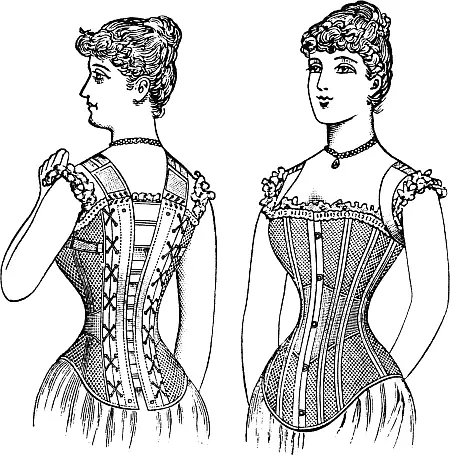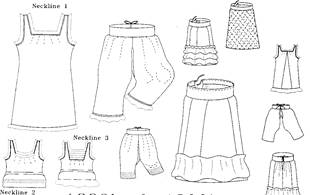The Victorian women wore a very unusual and fashionable type of undergarments which gradually changed from time to time. However, they did not differentiate under-clothing from structural garments.
Victorian era undergarments for women
The basic among this was the chemise, drawers, corsets, and layers of petticoats which remained more or less the same while the others were either done away with or added for effect. New additions included the crinolines, bustles, corset covers, and combinations.
A chemise or a shift was voluminous and helped in protecting the dress and the corset from the skin. The chemise was mostly made of white linen plain, had short sleeves and continued up to the knee. By the end of the century, however, chemise had become sleeveless garment with narrow shoulders with a round, U-shaped or heart shaped neckline to go with.

Drawers did not find a place in women’s wardrobes till the early nineteenth century. However, with the onset of crinoline in the 1850s, drawers became a necessity mainly for warmth and also as protection against any accidents. These drawers extended below the knee with separate leg joined at a waistband thereby leaving the crotch seam open. However, by the end of the century, they had become wide-legged and flared.
Combination consisted of chemise and drawers united in a fitting yet smooth garment. This fashion arose somewhere in the 1870s. This clothing was soon replaced by a number of modified dresses.
Victorian era petticoats
A dual role was played by Petticoats; as an under clothing as well as like a structural garment. As an undergarment, it provided the much-needed warmth and modesty. Additionally, it also gave shape to the dress. Petticoats came to be regarded as the ultimate symbol of femininity by the late Victorian period.

By the 1860s, the trend of chemise with a front flap declined. Instead, corset cover, petticoat-or under-bodice gained popularity. This corset cover not only protected the dress and the corset from each other but it also added modesty with gauzy summer and evening dress bodices. This prevented the corset to be seen through the neckline of the dress. This fashion had gained immense popularity during the century.
Victorian Corset
Corset, is another outfit which emerged during the Victorian era is used even today. The main purpose of wearing a corset was to help in shaping the figure in such a manner so as to suit the desired dress or outfit. Every woman of repute wore a corset every time. Corsets, initially, were in only two colors namely white and gray.
Around 1856, cage crinoline appeared in London. These crinolines gave free space to the ladies who previously had to wear several layers of petticoats to create that kind of the width to the skirt. Crinolines, however, suffered from various drawbacks, for instance, accidents, inconveniences involving open fires, stairs, doorways etc.
Though it was expected to disappear by 1867, that did not happen. Instead, these crinolines began extending behind just below the waist to form a bustle. But bustle, however, could not sustain itself for long and by 1889 it had ceased to see the day.
Stocking suspenders attached to a belt put on over the corset came into vogue in the year 1878. With the onset of suspenders, whether worn attached or separate made it impossible to wear a long petticoat underneath the corset. Read more about Corset punishments.. Read more about Corset punishments..
Early Victorian was extremely plain, simple and mostly made from white linen before cotton grew as the next best alternative and which replaced linen in the last few years of the century. All these outfits or garments were hand stitched. With the passage of time, however, great varieties could be seen even as far as undergarments were concerned and the last few decades, especially, witnessed some decorative, fancy lingerie.